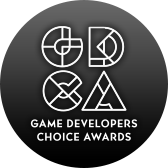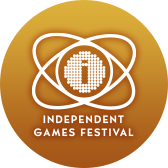At Osmo, designer Tony Aube isn't just thinking about the future of virtual and augmented reality, he's thinking about how that technology works best for users who happen to be kids.
At XRDC 2018, Aube will be presenting a talk on designing these kinds of experiences, and how drilling down on how the company moved past its early failed prototypes to make better AR and VR games. To get you ready for Aube's talk, we reached out for a quick Q&A about his work, which you can now read below.
Attend XRDC 2018 to learn about immersive games & entertainment, brand experiences, and innovative use cases across industries.
Tell us about yourself and your work in VR/AR/MR.
I joined Osmo as a UI/UX designer back in 2014. At that time, we had just launched our first three games: Words, Tangram and Newton. I was hired to help to design our 4th game, Masterpiece. Jerome, one of the co-founder, had done most of the early design work. But with his CTO position, he was getting really overwhelmed, so I took over.
Coming from a web design background, I had never worked in MR before. I had to adapt quickly.
Ultimately, working in MR brought me a much broader perspective on design. I’m very grateful for it. It made me understand that UX goes far beyond the screen. So many things shape the player’s experience, and as a designer, it is essential to understand and be intentional about these.
Since I’ve joined, we’ve grown from 10 to over 70 employees. We've successfully shipped 12 mixed-reality games, and we've won several design and technology awards. I must say it’s been quite the ride!
Without spoiling it too much, tell us what you’ll be talking about at XRDC.
The talk is about the early days of Osmo. I’ll share some of the first hardware and games prototypes and talk about why they didn't work. I’ll also cover the thought process behind the big early design decisions and why they led to Osmo's success.
What excites you most about AR/VR/MR?
I love the fact that the field is still brand new. There is so much room to grow. Almost every day brings a new design problem that I’ve never faced before. It’s a constant reminder that there is so much left to figure. It also means there are countless opportunities to be creative in solving those problems. That’s the most exciting for me.
Who would you like to meet at XRDC?
While AR, VR, and MR are different fields, they are similar in that they are very technically challenging. They force us to think beyond traditional UI design. I love how this brings people with very different, sometimes unusual backgrounds. It's always a blast to meet these people, hear their stories and learn how they solve problems in their own, unique creative ways.
What are special considerations developers need to keep in mind when making a product for children?
There is so much I could say about this. I think designing for children is exponentially harder than for adults. For instance, some of our users haven’t even learned how to read yet.
Focus on design. Try creating a UI that leverage visuals (e.g., icons) over words. Children have a shorter attention span and get easily distracted. Use contrast, motion, and size to drive attention towards where their focus should be. Make everything needs to be bigger, straightforward and explicit.
But at the same time, don’t go overboard. I see a lot of children’s product go for overly simple, almost cartoonish interfaces. That’s not required. Notice how children have no problem using IOS even though it has a very refined, adult-looking UI. They are very intelligent and can handle quite complex UIs, as long as they are well designed.
Finally, and most importantly, creating products for children means greater ethical concerns. I see so many applications and games for kids that use dark and addicting design patterns. The same patterns that are used in casino games. Children aren’t allowed in casinos, and they should not be using those games either. Don’t create a product you wouldn’t want your own children to use.
XRDC is happening October 29th and 30th in San Francisco at the Westin St. Francis Hotel. Now that registration is open, you’ll want to look over XRDC passes and prices and register early to get the best deal!
For more information about XRDC, which is produced by organizers of the Game Developers Conference, check out the official XRDC website. You can also subscribe to regular XRDC updates via email, Twitter and Facebook.



